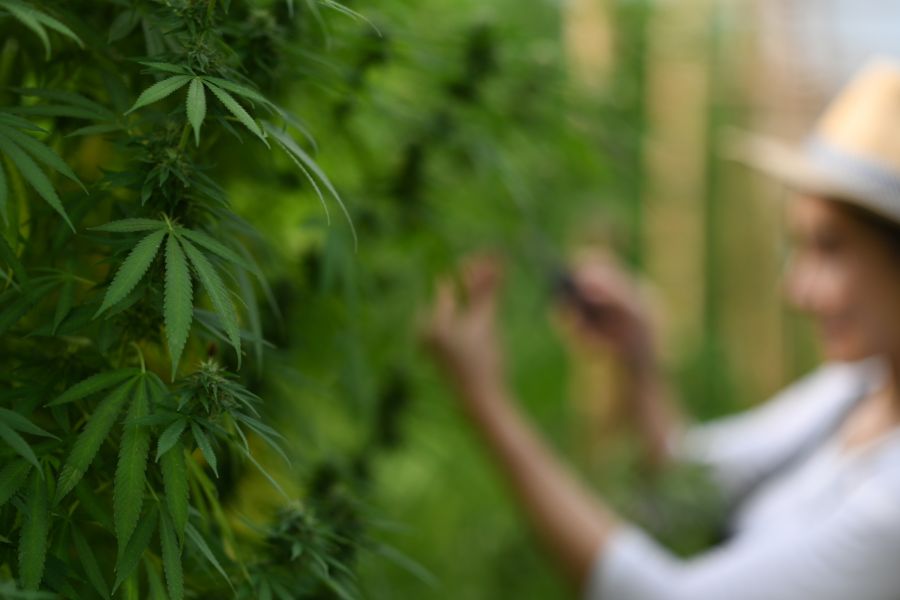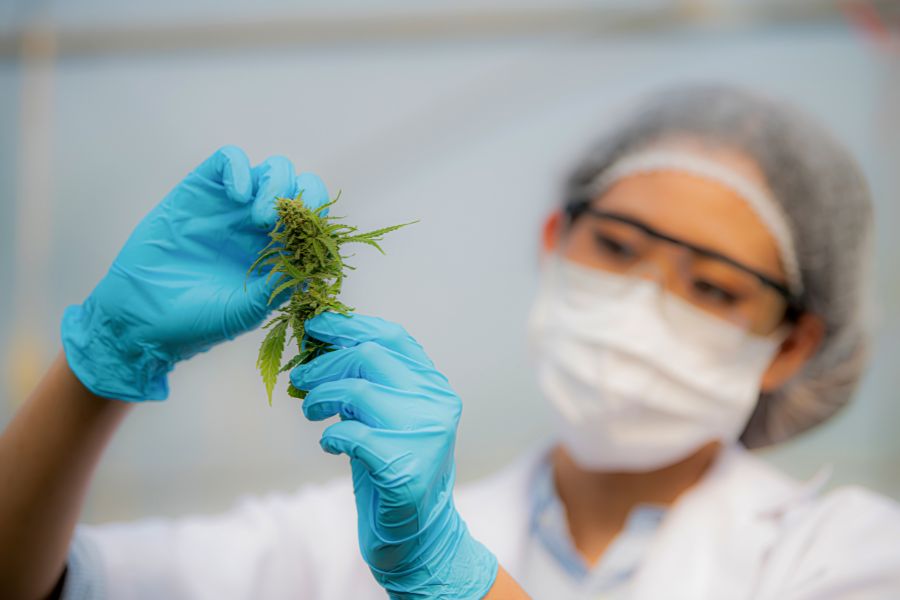Key Takeaways
- Identifying the diverse symptoms of cannabis allergies, from respiratory issues to severe anaphylactic reactions, is crucial for timely and effective management.
- Awareness of the legal implications and social challenges associated with cannabis use and allergies ensures better workplace and community accommodations.
- Educating the public and healthcare providers about cannabis allergies can reduce stigma and improve the quality of those affected.
Cannabis, known for its therapeutic benefits and recreational use, is increasingly popular worldwide. Its products, from soothing CBD oils to psychoactive marijuana, have become integral to many people’s daily routines.
However, as cannabis use grows, so does awareness of potential complications like cannabis allergies. These allergies can cause disruptive symptoms and concern anyone interacting with the plant—medicinally, recreationally, or industrially.
We will explore cannabis allergies, examining their symptoms, causes, and necessary precautions. Understanding these allergies is vital not only for affected individuals but also for participants in the expanding cannabis industry.
By promoting an informed approach, we aim to ensure safe and beneficial cannabis integration into society.
Understanding Cannabis Allergies

Cannabis allergies arise when the immune system negatively reacts to proteins in the plant, causing symptoms from mild skin irritation to severe respiratory issues. Although research is still emerging, reports of allergic reactions are increasing as cannabis use expands.
This underscores the growing need for awareness within the medical community and the public. Recognizing the signs of these allergies is crucial as the use of cannabis, both medicinal and recreational, continues to grow worldwide.
Symptoms of Cannabis Allergies
Cannabis allergies can present a diverse array of symptoms, each related to different forms of exposure to the marijuana plant. Here are some of the most common reactions:
- Respiratory Symptoms: Inhaling cannabis smoke or pollen can lead to coughing, wheezing, and a runny or stuffy nose (allergic rhinitis), mirroring typical allergic respiratory responses and asthma symptoms.
- Skin Reactions: Direct contact with cannabis plants may cause itchy skin, rashes, or more persistent conditions like eczema and contact dermatitis.
- Eye Symptoms: Exposure to cannabis smoke or cannabis pollen can irritate the eyes, resulting in itchiness, redness, and watering.
- Digestive Issues: Ingesting cannabis products can trigger allergic reactions in the gastrointestinal tract, such as nausea and vomiting.
- Severe Reactions: In rare cases, exposure to cannabis can induce anaphylaxis, a life-threatening reaction that necessitates immediate medical intervention. Symptoms include severe breathing difficulties, dizziness, and a rapid drop in blood pressure.
Causes and Risk Factors of Weed Allergies
Biological Basis of Cannabis Allergies
Cannabis allergies stem from the immune system reacting to specific proteins in the plant, which are recognized as threats and trigger allergic responses. Like proteins in plants like tomatoes and peaches, these can cause cross-reactivity in individuals sensitive to related species.
Understanding these biological underpinnings is crucial, as increased exposure, especially in occupational settings or through regular use, can heighten sensitivity and elevate the risk of allergic reactions.
Cross-Reactivity with Other Plants
Cross-reactivity happens when proteins in cannabis resemble those in plants like tomatoes, peaches, and nuts, triggering allergic reactions in individuals already sensitive to these species. This protein similarity can intensify sensitivity to cannabis in those with existing plant allergies.
Recognizing these cross-reactions is crucial for managing and anticipating potential allergic responses to cannabis.
Role of Exposure in Allergy Development
Frequent exposure to cannabis, particularly in occupational settings, significantly contributes to trigger allergy symptoms development. Regular contact heightens sensitization, making the immune system more reactive to cannabis allergens.
This is especially relevant for those in cultivation, production, or retail who handle cannabis daily. Understanding this dynamic is key to managing and preventing allergies in high-risk environments.
Diagnosis of Cannabis Allergies
Overview of Diagnostic Approaches

Diagnosing cannabis allergies involves clinical assessments, including skin prick and blood tests. Skin prick tests expose the skin to cannabis allergens and monitor reactions, indicating sensitivity. Blood tests detect cannabis-specific IgE antibodies, confirming an allergic response.
These diagnostic tools help healthcare providers identify cannabis allergies and create appropriate management strategies for affected individuals, making understanding these methods crucial for those experiencing symptoms.
Challenges in Diagnosing Cannabis Allergies
Diagnosing cannabis allergies presents unique challenges due to the complexities and limitations of current methods. While skin prick tests and blood tests are standard, they can yield inconsistent results because the allergenic components in cannabis are not fully standardized for diagnostic use.
Moreover, the variability in how individuals react to different strains and forms of cannabis complicates the accuracy of these tests.
These limitations underscore the need for advanced research and better diagnostic tools to effectively identify and manage cannabis allergies, ensuring tailored and effective treatment for those affected.
Management and Treatment for Cannabis Allergies
Avoidance Strategies
Managing cannabis allergies primarily involves strategic avoidance to minimize exposure to allergens. Individuals with a cannabis allergy should avoid smoking, inhaling, or directly handling cannabis products.
Using air purifiers and ensuring good ventilation can help reduce airborne allergens in environments where cannabis is present.
Additionally, wearing protective clothing and gloves during handling can prevent skin contact. These steps are essential to mitigate allergic reactions and maintain safety where cannabis is used or processed.
Medical Treatments
For those diagnosed with cannabis allergies, several medical marijuana allergy treatment are available to manage symptoms effectively:
- Antihistamines: These allergy medications can alleviate mild to moderate allergic reactions, such as sneezing, itching, and runny nose, by blocking the body’s histamine action.
- Inhalers: For respiratory symptoms like wheezing and shortness of breath, inhalers can offer immediate relief by opening airways and facilitating easier breathing.
- Emergency Treatments: In severe reactions, such as anaphylaxis, epinephrine injectors (EpiPens) are critical. They can rapidly counteract severe symptoms and are essential for those with a history of intense reactions.
These treatments play a crucial role in managing the diverse symptoms of cannabis allergies, ensuring individuals can lead safer, more comfortable lives despite their sensitivities.
Lifestyle Adjustments
For individuals in the cannabis industry, managing allergies requires crucial lifestyle adjustments. Employees must be aware of allergy risks and use protective gear like masks and gloves to reduce exposure.
Maintaining clean workspaces and installing effective ventilation can help minimize airborne allergens. Those with symptoms should also have access to medical treatments and consult healthcare professionals to create a tailored allergy management plan ( to help with allergic sensitization).
These measures ensure a safer work environment and help safeguard the health of cannabis industry workers.
Legal and Social Implications
Understanding Legal Context

Navigating the legal and social implications of cannabis use in the workplace requires understanding evolving regulations and social norms. As legalization spreads, employers must adapt policies to accommodate legal cannabis use while managing health concerns like allergies.
This involves balancing drug-free workplace mandates with medicinal cannabis rights and addressing exposure risks for allergic employees.
Developing clear policies and fostering open dialogue is essential to ensure fairness and safety, reflecting the changing legal landscape and societal views on cannabis.
Social Impact and Public Awareness
The social impact of cannabis allergies is considerable, as affected individuals often encounter stigma and misunderstanding. Despite increasing acceptance of cannabis, those with allergies can face skepticism, leading to social isolation or reluctance to disclose their condition.
Enhancing public awareness is essential to foster empathy and support within communities and workplaces. Educating the public about the realities of cannabis allergies can help reduce stigma and ensure that individuals feel recognized and supported.
Conclusion
In conclusion, understanding cannabis allergies is vital as its use becomes more prevalent globally. Recognizing the symptoms, causes, and appropriate diagnostic methods is crucial for effective management.
Equally important is addressing the legal and social challenges that come with cannabis allergies, ensuring that individuals are supported and protected in both social and workplace settings.
By raising awareness and promoting informed management strategies, we can mitigate the impact of cannabis allergies, ensuring safety and inclusivity for all those affected.
